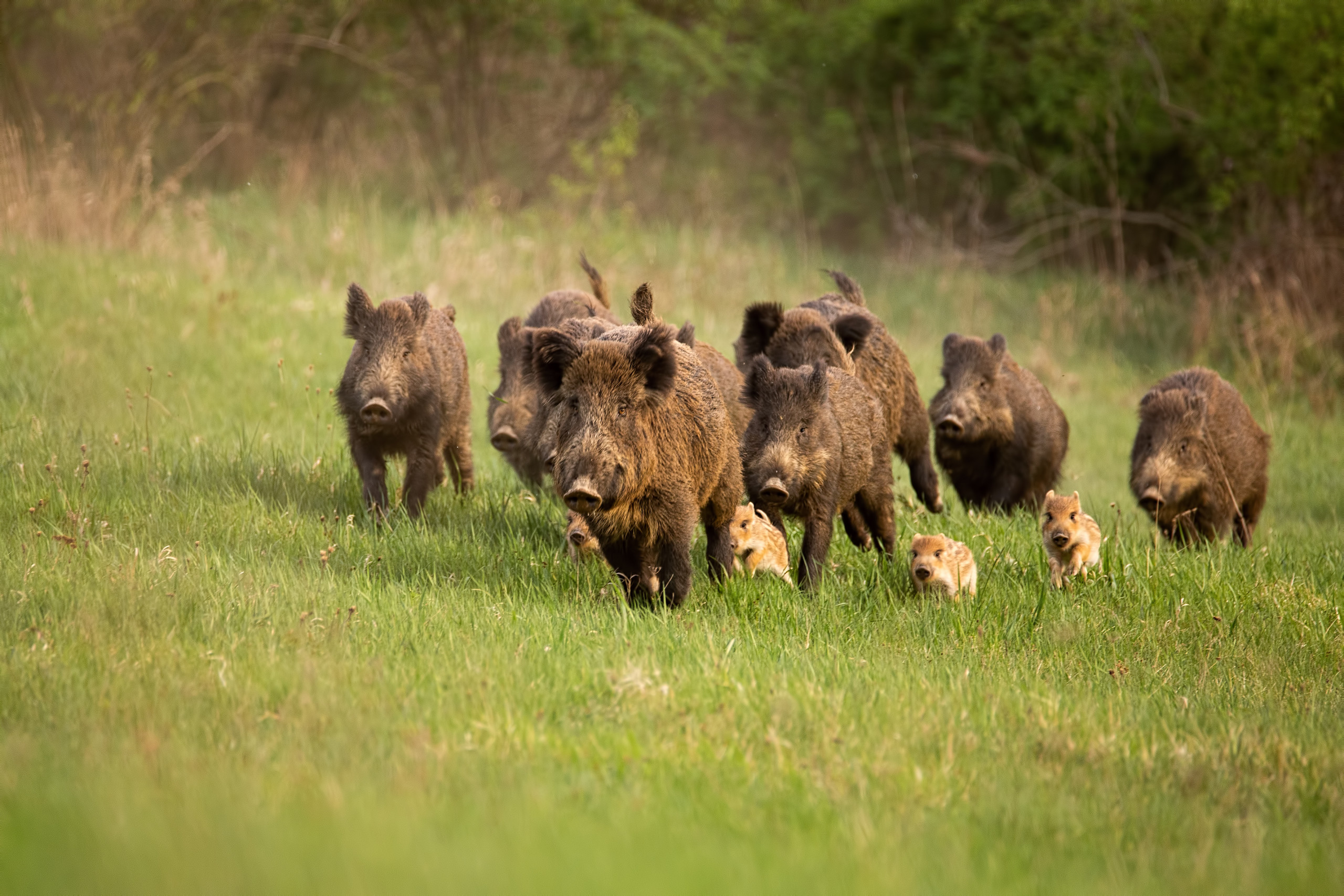The second working meeting on the role of wildlife in the potential spread of African swine fever (ASF) virus in the Americas will take place on Wednesday 29 March at 10.00 Panama time (UTC -5).
Following the re-emergence of ASF in the Americas in 2021, the Regional Steering Committee of the Global Framework for the Progressive Control of Transboundary Animal Diseases (GF-TADs), through its GF-TADs Standing Group of Experts on ASF, created a Regional Emergency Management Committee to address all issues related to the disease. Among its priorities, it highlighted the importance of having a network of experts to guide the policies and programmes needed to reduce the risks posed by wild pigs to animal health and pig production in the region.
Some of the topics to be discussed at the meeting are:
| Time | Topic | Coordinator / Speaker
|
| 10:00-10:05 | Welcome | Dr. Luis Barcos – WOAH Regional Representative for the Americas
Dr. Catya Martínez – WOAH Subregional Representative for Central America and The Caribbean |
| 10:05-10:10 | Objectives and dynamic for the meeting | Dr. Andrés González Serrano – Livestock Development Officer, FAO Regional Office for Latin America and The Caribbean |
| 10:10-10:30 | Conservation and research on infectious diseases of peccaries (Spanish) | Dr. Pedro Mayor – Sanidad y Anatomía Animales, Universidad Autónoma de Barcelona, España – Museo de Culturas Indígenas, Iquitos, Perú |
| 10:30-10:55 | A review of ASF in wild pigs in the Asia and the Pacific region: A review with recommendations. | Dr. Brendan Cowled – AUSVET |
| 10:55-11:20 | Challenges for prevention of ASF and protection of wild swine species
Experience from Asia |
Dr. Matthew Linkie – Deputy Country Director, Indonesia Program, Wildlife Conservation Society |
| 11:20-11:45 | Prevention and control of ASF in Asia – commercial and backyard swine production | Prof. Dirk Pfeiffer – Chow Tak Fung Chair Professor of One Health City University’s Jockey Club College of Veterinary Medicine and Life Sciences – City University of Hong Kong, Professor of Veterinary Epidemiology – Royal Veterinary College, London, UK – Adjunct Professor, China Animal Health & Epidemiology Centre, Qingdao, China |
| 11.45-12:10 | Mexico-USA collaboration for feral swine management in Mexico | Dr. Luis Lecuona, Agricultural Specialist in Animal Health USDA/APHIS/IS Mexico |
| 12:10-12:25 | Production and conservation of cerdo negro lampiño in Yucatan in the face of the threat posed by ASF (Spanish)
|
MVZ Raúl Sansor Nah, Production Manager, Granja Agroecológica El Hormiguero – Asociación Mexicana de Criadores de Cerdos de origen Ibérico de la Península de Yucatán |
| 12:25-12:40 | Research on biodiversity and genetic profile of cerdo pelón – genetic mechanisms of resistance to diseases (Spanish) | Dr. Clemente Lemus – Researcher, Universidad Autónoma de Nayarit |
| 12:40-12:45 | Receso | |
| 12:45-13:15 | Review of exercises “check list” and “OKR” | Dr Andrea Marcos – SENASA Argentina
Dr Susana Ureña, SENASA Costa Rica M.V. Robin Gamarra Madueño, SENASA Perú |
| 13:15-13:35 | Analysis of the patterns of movement of pigs in Mexico and their implications in the transmission of ASF (Spanish) | MVZ MSc Alejandro Zaldívar Gómez, Doctoral Student, Laboratory of disease ecology and One Health – Faculty of Veterinary Medicine and Zootechnics – UNAM |
| 13:35-13:55 | Simulation modeling for the evaluation of the introduction and spread of ASF (Spanish) | DVM, MPVM, PhD. José Pablo Gómez Vázquez, Post-doctoral Student, Center for Animal Disease Modeling and Surveillance (CADMS) – UC Davis |
| 13:55-14:00 | Next activities | Dr. Rocío Campuzano – GF-TADs, Regional Project Officer (Americas) |
| 14:00-14:05 | Closure of meeting | Dr. Luis Barcos / Dr. Andrés González Serrano
|
More information:
